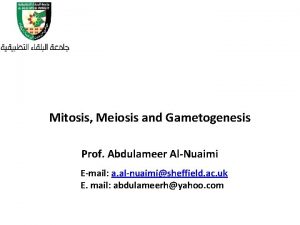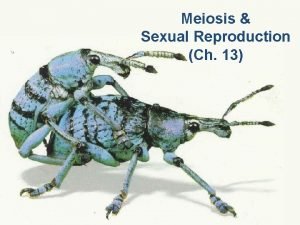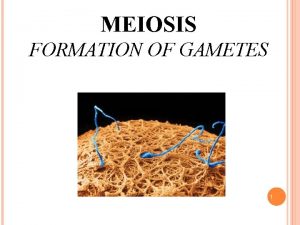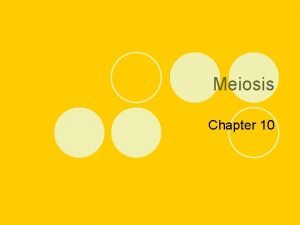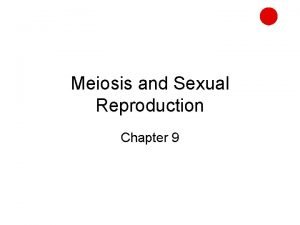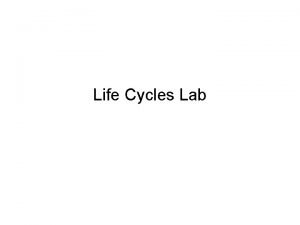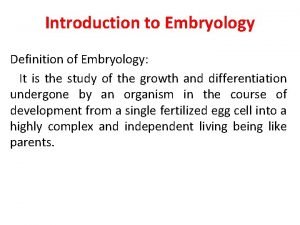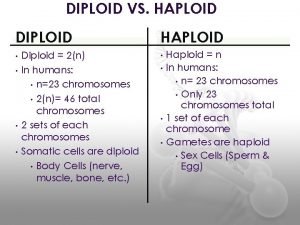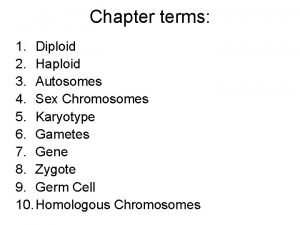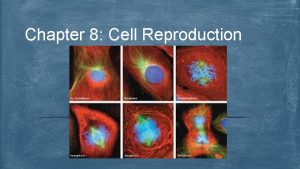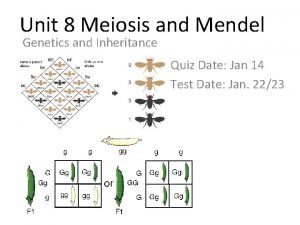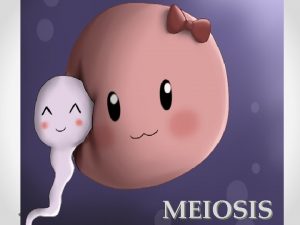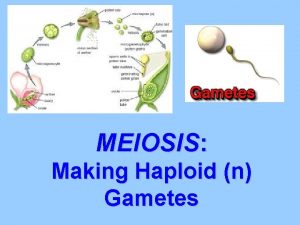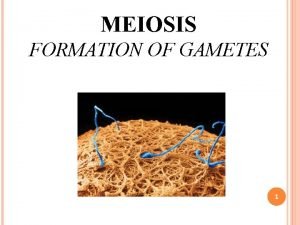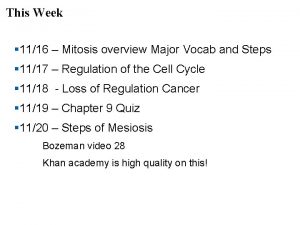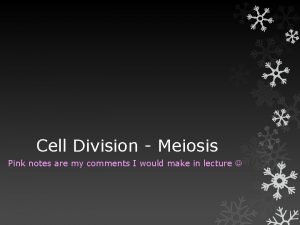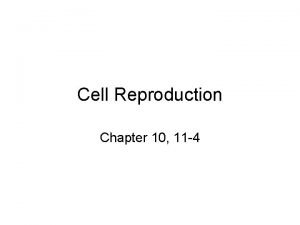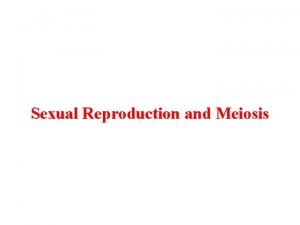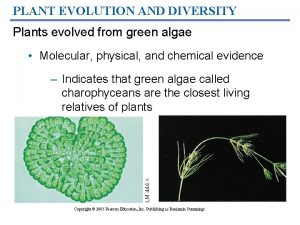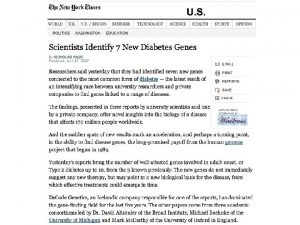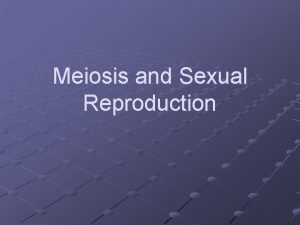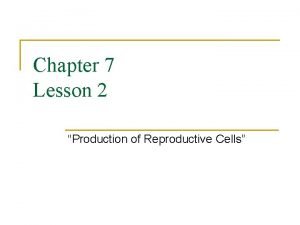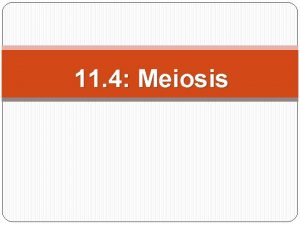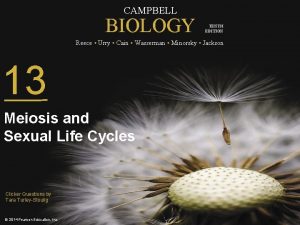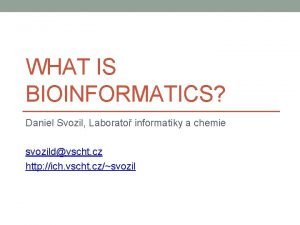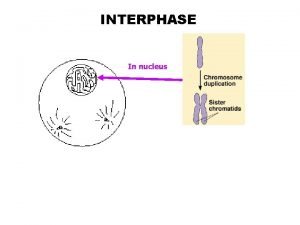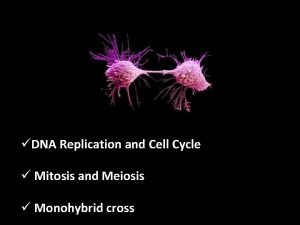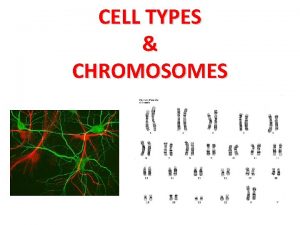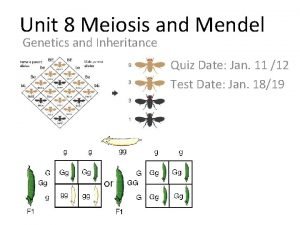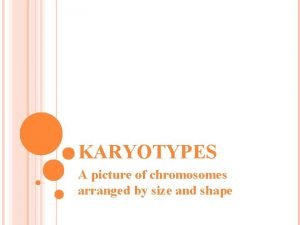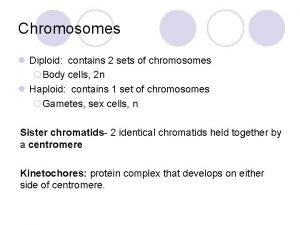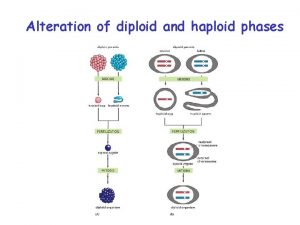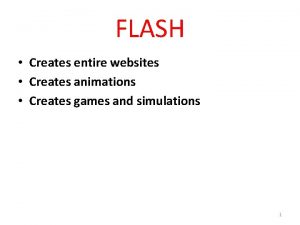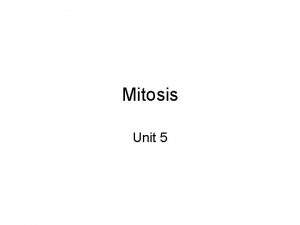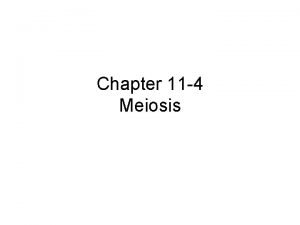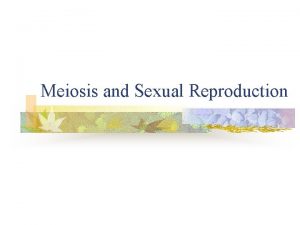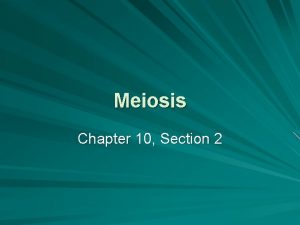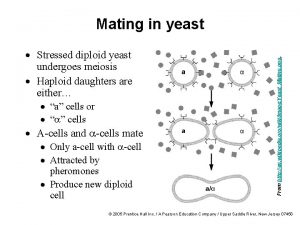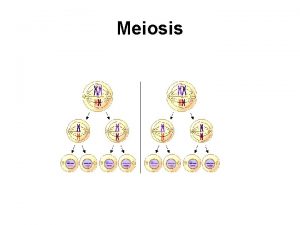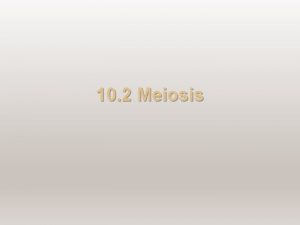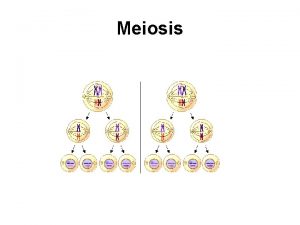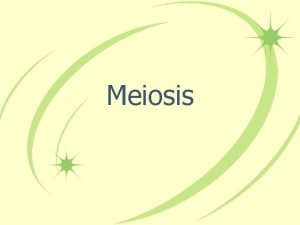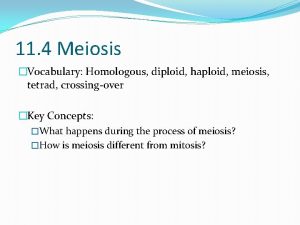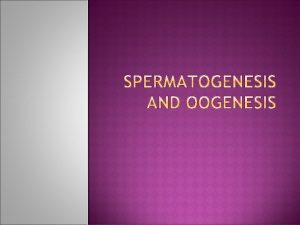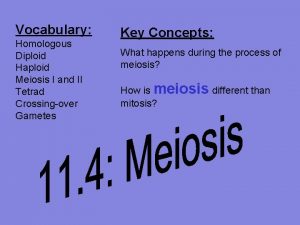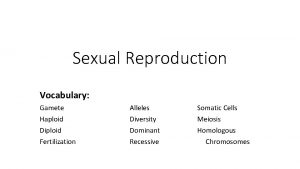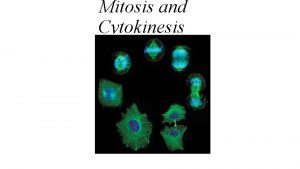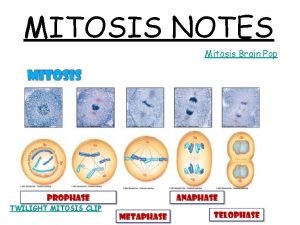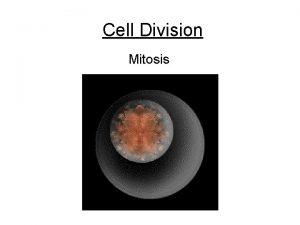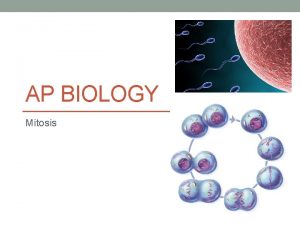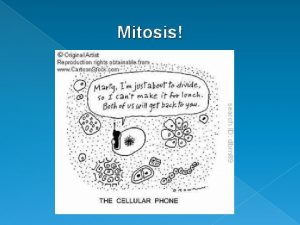Unit 6 Haploid vs Diploid Mitosis creates Diploid















































- Slides: 47

Unit 6

Haploid vs Diploid • Mitosis creates Diploid cells, which are cells that contain two complete sets of chromosomes. • We abbreviate this 2 n.

Haploid vs Diploid • In a Haploid cell, only ONE complete set of chromosomes is present. • We abbreviate it n.

Meiosis • Meiosis is sexual reproduction. Only occurs in the sex organs – ovaries and testes. • Results in the production of gametes, which are sex cells. • Meiosis begins with a diploid cell, and the end result is 4 haploid cells. • Meiosis is similar to Mitosis because there is still Interphase and PMAT, but in Meiosis, PMAT occurs twice.

Stages of Meiosis • Interphase • The DNA replicates • MEIOSIS I • Prophase I • Spindle fibers form and the chromosomes pair up. • These paired chromosomes are called Homologous Chromosomes. • While the Homologous Chromosomes are paired up, crossing over occurs.

Crossing Over • During crossing over, genetic information (DNA) is exchanged. • The result is chromatids that are no longer identical.

Meiosis I • Metaphase I • The homologous chromosomes line up in the cell. • Anaphase I • The chromosomes pull apart.

Meiosis I • Telophase I • The cells begin to divide into 2 cells. • Cytokinesis • 2 individual, haploid cells are created.

Meiosis II • Prophase II • Chromosomes form, spindle fibers form • Metaphase II • Chromosomes line up

Meiosis II • Anaphpase II • Sister chromatids pull apart • Telophase II • The 2 cells are now dividing into 4

Meiosis II • Cytokinesis • 4 haploid cells are formed. All are genetically different.

Gamete formation in males Stages of Meiosis Gamete formation in females

Meiosis Video https: //www. youtube. com/watch? v=to. WK 0 f. Iy. Fl. Y

Genetic Variation • How do we each become our own individual with our own unique set of genes? How does genetic variation occur? • Genetic variation occurs during crossing over (Prophase I)

Genetic Variation cont. • Occurs during random assortment of chromosomes during the different stages of meiosis. • This is the Law of Independent Assortment.

Genetic Variation • Law of Segregation – during meiosis, the chromosome splits and the chromatids segregate. • Each gamete gets half of the genetic information.

Genetic Variation cont. • Occurs during fertilization – ½ of DNA comes from each parent • Gene mutation • Non-disjunction – chromosomes did not properly split

Stop here day one

Karyotype • A karyotype is a picture or profile of a person’s chromosomes. • Chromosomes are paired up and numbered 1 -22, and the 23 rd chromosome is labeled XY and determines gender. • We use karyotypes to show chromosomal abnormalities.


What can you notice about this Karyotype – what is it missing? On the X and Y chromosomes, there is only 1 X chromosome. It is missing a second sex chromosome. This is called Turner’s Syndrome.

This is a Karyotype for Trisomy 21. Notice there are 3 chromosomes on the 21 st chromosome. This was caused by a non-disjunction. Trisomy 21 is also known as Down Syndrome.

More practice with karyotypes • Open your textbook to…Pg. 318 • Chromosomes for Male ? Female? • Pg. 329 • Male of Female? • Normal or not? • Pg. 335 • Male or Female?

Gregor Mendel • Father of genetics • Austrian Monk • He did experiments on Pea plants to show traits were passed down • He studied the shape, seed color, outer coat, pea pod, and stem to see which traits occurred more or less often. • He was the first to observe: • The Law of Independent Assortment • The Law of Segregation


Genotype • The genes of the organism Phenotype • What the organism looks like

• Allele – one or more versions of a gene. • Located at a specific position on a specific chromosome • Dominant Allele • What will be expressed. • It “masks” other alleles. • Written in upper case. • Recessive Allele • It will only be expressed if the dominant allele is not present. • Written in lowercase.

• Heterozygous • Hybrid • Having 2 different alleles for a gene • Homozygous • Same; purebred • Have 2 of the same alleles for a gene

Punnett Squares • The diagram used to predict the genotype and phenotype.

Punnett Squares • Ex. You have 2 mice that are heterozygous for their brown coats. Brown is the dominant color and white is the recessive. Create a Punnett Square that shows the cross between these two mice. B B BB b Bb What are the ratios of genotypes you will get? 1: 2: 1 bb What percent of each phenotype will you see? 75% brown 25% white

Incomplete Dominance Punnett Square

Incomplete Dominance • When one allele is not completely dominant over the other. • The heterozygous genotype will result in a blend. • Ex. Snapdragons

Co-dominance • Co-dominance results in the expression of both traits.

Polygenic Traits • Traits which are coded for by more than one allele. • Usually results in blending of traits. • Ex. Hair color, eye color, skin color

Blood Types • Blood types are an example of codominance. • A and B are both dominant. • O is recessive.


Sex-Linked Traits • Trait is more likely to be inherited by males. • Recessive • Genes for these traits are found on the X and not the Y chromosome. • This is why the X is bigger than the Y.

Sex-Linked Traits

Examples of Sex-linked Traits • Red/Green Colorblindness • Hemophilia – the inability of the blood to properly clot

Pedigrees • Charts are made to show traits are passed down through the generations. • Things to note: • Generations are denoted by Roman numerals. • Number individuals from left to right.

Pedigrees • Symbols: Female Married Divorced Male Affected Male Deceased Siblings

Hemophilia in the Royal Family

Bellwork • From Genetics practice problems, finish the page on Blood Type Punnett Squares • Finish reading and answering questions on blood types

What else can Punnett Squares be used for? • Punnett Squares can also be used to show genetic disorders get passed down from parent to offspring. • PKU is a recessive gene. • Ex. Phenylketonuria (PKU) • A genetic disorder that causes the build up of the amino acid phenylalanine in the body. • Symptoms: delayed development Intellectual disability P p Behavioral, emotional and social problems Psychiatric disorders P PP Pp Neurological problems that may include seizures Hyperactivity Poor bone strength p Pp pp Skin rashes (eczema)

Genetic Disorders • Cystic Fibrosis • Most commonly caused by a deletion of 3 base pairs on the 7 th chromosome. • Approx. 2500 babies are born each year in US with Cystic Fibrosis. • It is estimated that 10 million Americans are carriers of the gene. • Recessive • Symptoms: Respiratory problems Mucous in the lining of the lungs

Genetic Disorders • Huntington’s Disease • Dominant Trait • Caused by a mutation on the 4 th chromosome • Approx. 1 in 30, 000 people in US have Huntington’s • Symptoms: • Affects thinking, motion, and movement • Symptoms do not usually appear until age 30 -50

Genetic Disorder Chart Genetic Disorder Recessive, Dominant, or Chromosome Affected Symptoms/Traits
 Prophase 2
Prophase 2 Is mitosis asexual
Is mitosis asexual Why is meiosis important?
Why is meiosis important? What is diploid and haploid
What is diploid and haploid Do sister chromatids have same alleles
Do sister chromatids have same alleles Primary oocyte haploid or diploid
Primary oocyte haploid or diploid Chapter 9
Chapter 9 What process occurs
What process occurs Parthenogenese
Parthenogenese Introduction of embryology
Introduction of embryology Diploid vs haploid number
Diploid vs haploid number Diploid vs haploid
Diploid vs haploid Cell with 4 chromosomes
Cell with 4 chromosomes Dna structure and replication pogil
Dna structure and replication pogil Haploid karyotype
Haploid karyotype Haploid and diploid venn diagram
Haploid and diploid venn diagram Meiosis
Meiosis Gametes
Gametes First polar body
First polar body How could oogenesis be modified to produce diploid eggs
How could oogenesis be modified to produce diploid eggs Painting
Painting Haploid
Haploid Does meiosis 1 produce haploid cells
Does meiosis 1 produce haploid cells Haploid
Haploid Gametangial contact
Gametangial contact Haploid number
Haploid number Fonte
Fonte Produces diploid cells
Produces diploid cells Plant haploid
Plant haploid Describe gametes
Describe gametes Haploid
Haploid Alternation of generation in fern
Alternation of generation in fern Number of chromosomes in haploid cells in a king crab
Number of chromosomes in haploid cells in a king crab Haploid cells def
Haploid cells def Unit 6 review questions
Unit 6 review questions Diploid cells
Diploid cells Privet shrubs and humans each have a diploid number of 46
Privet shrubs and humans each have a diploid number of 46 Privet shrubs and humans each have a diploid number of 46
Privet shrubs and humans each have a diploid number of 46 Daniel svozil
Daniel svozil Number of divisions in mitosis
Number of divisions in mitosis What is diploid
What is diploid Diploid cell
Diploid cell Diploid cell
Diploid cell Heterozygous tall
Heterozygous tall Diploid cell
Diploid cell Zwk9904
Zwk9904 Diploid contains 2 sets of chromosomes
Diploid contains 2 sets of chromosomes West north west wind direction
West north west wind direction
